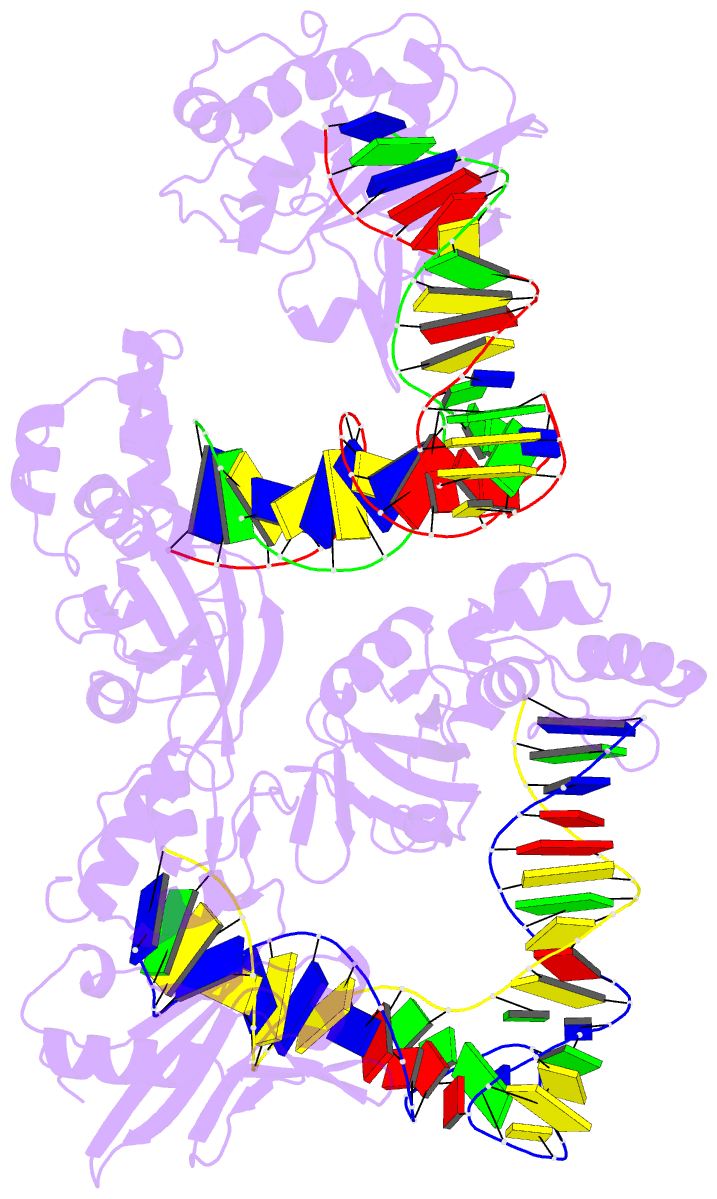Summary information and primary citation
- PDB-id
-
5xm8;
SNAP-derived features in text and
JSON formats
- Class
- transferase-DNA
- Method
- X-ray (2.55 Å)
- Summary
- Crystal structure of asfvpolx in complex with DNA
enzyme and pb.
- Reference
-
Liu H, Yu X, Chen Y, Zhang J, Wu B, Zheng L,
Haruehanroengra P, Wang R, Li S, Lin J, Li J, Sheng J,
Huang Z, Ma J, Gan J (2017): "Crystal
structure of an RNA-cleaving DNAzyme." Nat
Commun, 8, 2006. doi: 10.1038/s41467-017-02203-x.
- Abstract
- In addition to storage of genetic information, DNA can
also catalyze various reactions. RNA-cleaving DNAzymes are
the catalytic DNAs discovered the earliest, and they can
cleave RNAs in a sequence-specific manner. Owing to their
great potential in medical therapeutics, virus control, and
gene silencing for disease treatments, RNA-cleaving
DNAzymes have been extensively studied; however, the
mechanistic understandings of their substrate recognition
and catalysis remain elusive. Here, we report three
catalytic form 8-17 DNAzyme crystal structures. 8-17
DNAzyme adopts a V-shape fold, and the
Pb<sub>2+</sub> cofactor is bound at the
pre-organized pocket. The structures with
Pb<sub>2+</sub> and the modification at the
cleavage site captured the pre-catalytic state of the RNA
cleavage reaction, illustrating the unexpected
Pb<sub>2+</sub>-accelerated catalysis,
intrinsic tertiary interactions, and molecular kink at the
active site. Our studies reveal that DNA is capable of
forming a compacted structure and that the
functionality-limited bio-polymer can have a novel solution
for a functional need in catalysis.





